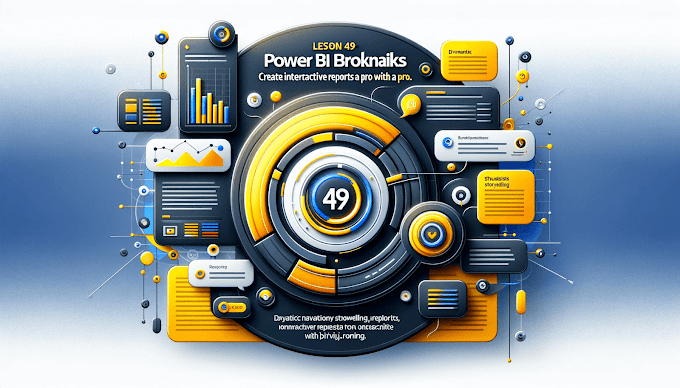Welcome back to Virvijay.com, your ultimate guide to learning Power BI! So far, we’ve explored cleaning data with Power Query, creating dashboards, and diving into DAX for custom calculations. In this blog, we’ll focus on a critical aspect of Power BI: building relationships between tables.
Relationships are the foundation of an efficient data model. They allow you to connect multiple tables and analyze them together, unlocking deeper insights.
What Are Relationships in Power BI?
A relationship in Power BI links two tables using a common column, such as an ID, Date, or Product Name. Relationships enable you to:
- Connect data from different tables.
- Create unified visuals and calculations.
- Avoid repetitive data storage, making your model efficient.
Step 1: Understanding Relationship Types
Power BI supports three types of relationships:
One-to-Many (1:M)
- The most common relationship type.
- Example: A Customers table (one record per customer) and a Sales table (many transactions per customer).
One-to-One (1:1)
- Connects two tables where each value in a column matches exactly one record in the other table.
- Example: A Users table and a UserDetails table.
Many-to-Many (M:M)
- Used when both tables have multiple matching records.
- Example: A Products table and a Promotions table where products can belong to multiple promotions.
Step 2: Setting Up Relationships in Power BI
1. Loading Your Data
Start by importing multiple related datasets into Power BI, such as:
- A Products table with columns: Product ID, Name, Category.
- A Sales table with columns: Sale ID, Product ID, Quantity, Revenue.
2. Accessing the Model View
- Click the Model icon on the left-hand navigation pane.
- You’ll see all your tables as boxes with their fields listed.
3. Creating a Relationship
- Drag the Product ID field from the Products table to the Product ID field in the Sales table.
- Power BI automatically detects and creates a 1:M relationship.
4. Configuring the Relationship
- Double-click the relationship line to open the Edit Relationship dialog.
- Check the following:
- Cardinality: Ensure it’s correctly set (e.g., One-to-Many).
- Cross Filter Direction: Choose Both for bidirectional filtering if needed.
- Click OK to save.
Step 3: Using Relationships in Visuals
Once the relationships are set, you can create visuals that leverage data from multiple tables.
Example 1: Total Sales by Category
- Drag Category from the Products table into your visual.
- Drag Revenue from the Sales table into the same visual.
- Power BI automatically uses the relationship to calculate total revenue for each category.
Example 2: Filtering Data Across Tables
- Add a slicer using the Category field from the Products table.
- Selecting a category will filter the visuals based on related sales data.
Step 4: Managing Relationships
As your data model grows, it’s crucial to manage relationships effectively:
1. View Relationship Lines
- Hover over the relationship lines in the Model View to see details like cardinality and filter direction.
2. Delete or Modify Relationships
- Right-click a relationship line to delete or edit it.
- Always verify your changes to avoid breaking your visuals.
3. Use Active Relationships
- Power BI allows multiple relationships between tables, but only one can be active at a time.
- Use the Manage Relationships dialog to activate the correct one.
Step 5: Avoiding Common Pitfalls
Circular References
- Avoid relationships that create a loop in the model. Power BI doesn’t allow them as they can cause calculation errors.
Ambiguous Relationships
- If Power BI doesn’t know which path to use between tables, you’ll encounter ambiguity. Resolve this by setting the appropriate active relationship.
Incorrect Cardinality
- Always verify the cardinality (1:M, M:M, etc.) to match your data structure.
Best Practices for Building Relationships
- Normalize Your Data: Store data in separate tables based on entities (e.g., Customers, Products, Sales) to avoid redundancy.
- Use Unique Identifiers: Ensure key columns have unique values for reliable relationships.
- Optimize for Performance: Remove unnecessary columns and reduce the size of your data model.
- Leverage Star Schema Design: Organize your model with fact tables (e.g., Sales) and dimension tables (e.g., Products, Customers) in a star-like structure.
What’s Next?
You’ve now learned how to build and manage relationships in Power BI. With this foundation, you can create robust data models for even the most complex datasets. In our next blog, we’ll explore how to optimize your Power BI data model for performance and create faster, more efficient reports.
Final Thoughts
Understanding relationships is key to unlocking the full potential of Power BI. By linking your tables effectively, you’ll create more meaningful insights and deliver value to your audience.
At Virvijay.com, we’re committed to helping you succeed in your Power BI journey. If you found this guide useful, share it with your network and stay tuned for more step-by-step tutorials.
Let’s build better data models together!
Write Us- Support@virvijay.com.

















